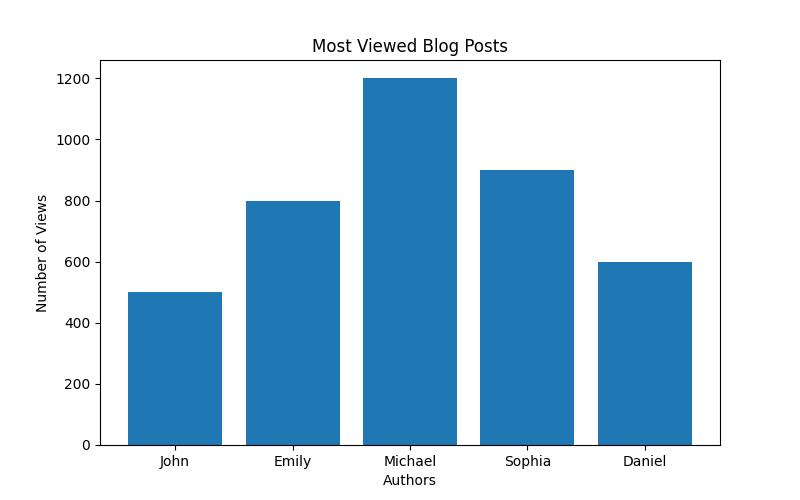What you will learn by reading this article:
- The definition and importance of dwell time in SEO.
- Factors that influence dwell time and strategies to optimize it.
- How to encourage user engagement and monitor dwell time.
Definition of Dwell Time in SEO
In the world of SEO, dwell time refers to the amount of time a user spends on a webpage after clicking on a search result. It is a metric that measures user engagement and indicates how satisfied users are with the content they find. Dwell time is an important factor that search engines like Google consider when determining the quality and relevance of a webpage.
Importance of Dwell Time as a Ranking Factor
Dwell time plays a crucial role in SEO because it provides valuable insights into how users interact with a website. When users spend more time on a webpage, it indicates that the content is valuable, engaging, and meets their needs. This signals to search engines that the webpage is of high quality, leading to improved search engine rankings.
Moreover, dwell time is a strong indicator of user satisfaction. If users quickly navigate away from a webpage, it suggests that the content did not meet their expectations or needs. On the other hand, if users spend a significant amount of time on a webpage, it indicates that the content is relevant, informative, and engaging. This positive user experience can lead to increased conversion rates and better overall website performance.
Understanding Dwell Time
How Dwell Time is Measured
Dwell time is measured by analyzing the time difference between when a user clicks on a search result and when they return to the search engine results page (SERP). It is important to note that dwell time is different from bounce rate. While bounce rate measures the percentage of users who navigate away from a webpage after viewing only one page, dwell time takes into account the duration of time spent on the webpage before returning to the SERP.
Search engines like Google track dwell time using various signals, including browser data, click-through rates, and user behavior metrics. By analyzing these signals, search engines can determine the level of user engagement and the quality of the webpage’s content.
Why Dwell Time Matters to Search Engines
Search engines aim to provide the best possible search experience to their users. They want to ensure that the webpages they rank highly in search results are valuable, relevant, and meet user needs. Dwell time serves as an important indicator of user satisfaction and the quality of a webpage’s content.
When users spend more time on a webpage, it suggests that the content is engaging and informative. This aligns with the search engine’s goal of providing users with the most useful and relevant information. As a result, search engines are more likely to rank webpages with higher dwell times higher in search results, as they believe these webpages are more likely to meet user expectations.
Factors Influencing Dwell Time
Several factors can influence dwell time on a webpage. Understanding these factors can help website owners and SEO professionals optimize their content and design to improve dwell time and user engagement.
Quality and Relevance of Content
One of the most crucial factors influencing dwell time is the quality and relevance of the content. Users are more likely to spend time on a webpage if the content is valuable, informative, and meets their needs. It is important to create well-researched, original, and engaging content that provides unique insights or solves a problem for the target audience.
To optimize dwell time, it is essential to use relevant keywords naturally throughout the content. This helps search engines understand the topic of the webpage and ensures that it appears in relevant search results. However, it is important to avoid keyword stuffing, as this can negatively impact the user experience and lead to penalties from search engines.
Page Load Speed and Performance
Page load speed is another crucial factor that affects dwell time. Users expect webpages to load quickly, and if a webpage takes too long to load, they are more likely to navigate away. Slow page load speed not only frustrates users but also negatively impacts search engine rankings.
To optimize dwell time, website owners should focus on improving page load speed. This can be achieved by optimizing images and files, minimizing HTTP requests, and leveraging browser caching. Regular performance monitoring and optimization can help ensure that webpages load quickly and provide a positive user experience.
User Experience and Design
The user experience and design of a webpage play a significant role in determining dwell time. A well-designed webpage that is easy to navigate and visually appealing can encourage users to stay longer and engage with the content.
Website owners should focus on creating clear and intuitive navigation menus, utilizing breadcrumbs, and implementing internal linking. Internal linking helps users discover related content, keeping them engaged and on the website for longer periods. Additionally, using headings, subheadings, and bullet points makes the content more scannable and digestible, increasing the likelihood of users spending more time on the page.
Mobile Optimization
With the increasing use of mobile devices, optimizing for mobile is crucial for improving dwell time. Mobile optimization ensures that webpages are responsive and accessible on various devices and screen sizes.
To optimize dwell time on mobile, website owners should prioritize responsive design, fast mobile page load speed, and easy navigation. Additionally, it is important to ensure that the content is easily readable on smaller screens and that interactive elements are user-friendly.
| Factors Influencing Dwell Time | Strategies to Optimize Dwell Time |
|---|---|
| Quality and Relevance of Content | Creating Engaging and Informative Content |
| Page Load Speed and Performance | Incorporating Visual Elements |
| User Experience and Design | Enhancing User Experience |
| Mobile Optimization | Optimizing Page Load Speed |
Strategies to Optimize Dwell Time
Now that we understand the factors that influence dwell time, let’s explore some effective strategies to optimize dwell time and improve user engagement.
Creating Engaging and Informative Content
To optimize dwell time, it is essential to create content that is both engaging and informative. Users are more likely to spend time on a webpage if the content provides value, answers their questions, or solves their problems.
1. Using Relevant Keywords
Including relevant keywords in your content is essential for SEO and can help attract the right audience to your webpage. Conduct keyword research to identify the terms and phrases that your target audience is searching for and incorporate them naturally throughout your content. This will help search engines understand the relevance of your webpage to specific search queries and improve your chances of ranking higher in search results.
2. Structuring Content for Readability
Well-structured content is easier to read and digest, increasing the likelihood of users spending more time on your webpage. Use headings, subheadings, and bullet points to break up the text and make it more scannable. This helps users navigate the content easily and find the information they are looking for. Additionally, consider using bold and highlighted text to draw attention to key points and make the content more visually appealing.

Incorporating Visual Elements
Visual elements can significantly enhance user engagement and dwell time. Including images, infographics, videos, and interactive media can make your content more visually appealing and help users understand complex concepts more easily.
1. Images and Infographics
Including relevant images and infographics throughout your content can make it more visually appealing and engaging. Visual elements not only break up the text but also help convey information more effectively. However, it is important to optimize images for the web by compressing them without compromising quality. Large image files can slow down page load speed, negatively impacting dwell time.
2. Videos and Interactive Media
Videos and interactive media can be powerful tools for increasing dwell time. They provide an immersive and interactive experience that captivates users and keeps them engaged. Consider creating informative and engaging videos related to your content or incorporating interactive elements such as quizzes or calculators. These elements can encourage users to spend more time on your webpage and increase their likelihood of converting.

Enhancing User Experience
A positive user experience is crucial for optimizing dwell time. By focusing on user experience, you can create a website that users want to explore and spend time on.
1. Easy Navigation and Internal Linking
Ensure that your website has clear and intuitive navigation menus that make it easy for users to find the information they are looking for. Implementing breadcrumbs can further enhance navigation and help users understand their location within the website’s hierarchy.
In addition to easy navigation, internal linking is essential for guiding users to related content. By linking to relevant pages within your website, you can encourage users to explore further and spend more time on your website. Internal linking also helps search engines understand the structure and relevance of your website’s content.
2. Clear Call-to-Actions
Including clear and compelling call-to-actions (CTAs) throughout your webpage can encourage users to take desired actions and spend more time engaging with your content. Whether it’s signing up for a newsletter, downloading a resource, or making a purchase, well-placed CTAs can guide users towards conversion and increase dwell time.

Optimizing Page Load Speed
As mentioned earlier, page load speed is a critical factor that affects dwell time. Slow-loading webpages can frustrate users and lead to high bounce rates. To optimize dwell time, it is essential to improve page load speed.
1. Minimizing HTTP Requests
Reducing the number of HTTP requests made by a webpage can significantly improve page load speed. Minimize the use of external scripts, stylesheets, and unnecessary plugins. Combine and compress CSS and JavaScript files to reduce the overall file size and the number of requests required to load the page.
2. Compressing Images and Files
Optimizing images and files is crucial for improving page load speed. Compress images without sacrificing quality by using image compression tools. Additionally, minify HTML, CSS, and JavaScript files to reduce their size and improve load times.
By implementing these strategies, you can optimize dwell time, improve user engagement, and provide a positive user experience on your website.

Encouraging User Engagement to Improve Dwell Time
In addition to optimizing content and design, encouraging user engagement can further improve dwell time and enhance the overall user experience. Let’s explore some effective ways to engage users and increase their time spent on your website.
Interactive Elements and Features
Including interactive elements and features on your website can significantly increase dwell time. These elements encourage users to actively engage with your content, making their experience more enjoyable and memorable.
1. Quizzes and Surveys
Quizzes and surveys are excellent tools for engaging users and increasing dwell time. Create interactive quizzes or surveys that are relevant to your content and encourage users to participate. This not only keeps users on your webpage for longer but also provides valuable insights and feedback.
2. Comments and Social Sharing
Allowing users to leave comments and share your content on social media platforms can boost user engagement and dwell time. Users can engage in discussions, ask questions, and share their thoughts on your content, encouraging others to join in. This creates a sense of community and increases the time users spend on your webpage.
Personalization and Customization
Personalization and customization can significantly enhance user engagement and dwell time. Tailor your content and website experience to cater to individual user preferences and interests. This can include personalized recommendations, relevant product suggestions, or customized user interfaces. By making users feel like the content is specifically curated for them, you can increase their engagement and time spent on your website.
Social Proof and Testimonials
Including social proof and testimonials on your website can enhance user trust and engagement. Positive reviews, testimonials, and case studies can provide evidence of the value and quality of your products or services. When users see that others have had a positive experience with your brand, they are more likely to spend more time exploring your website and engaging with your content.

Monitoring and Analyzing Dwell Time
To effectively optimize dwell time, it is crucial to monitor and analyze the data related to user engagement on your website. By understanding how users interact with your content, you can make informed decisions to improve dwell time and overall website performance.
Tools and Analytics Platforms
Several tools and analytics platforms can provide valuable insights into dwell time and user engagement. Google Analytics is a popular and powerful tool that can help you track and analyze user behavior on your website. It provides data on dwell time, bounce rate, page views, and other important metrics that can help you understand user engagement.
Interpreting Dwell Time Data
Interpreting dwell time data requires analyzing various metrics and understanding their implications. Track the average dwell time for different webpages and identify pages with low dwell times. This can indicate areas where improvements can be made, whether it’s optimizing content, improving page load speed, or enhancing user experience.
Making Informed Decisions based on Insights
Based on the insights gained from monitoring and analyzing dwell time data, make informed decisions to optimize your website. Experiment with different strategies and monitor the impact on dwell time and user engagement. Continuously refine and improve your content, design, and user experience to increase dwell time and overall website performance.
Case Studies and Success Stories
To illustrate the impact of dwell time optimization, let’s explore two case studies and success stories.
Website A: How optimizing dwell time improved search rankings
Website A, a small e-commerce business, focused on optimizing their dwell time to improve their search rankings. By creating valuable and engaging content, incorporating visual elements, and enhancing user experience, they were able to increase their average dwell time from 1 minute to 3 minutes. As a result, their search rankings improved significantly, leading to increased organic traffic and higher conversion rates.
Website B: The impact of user engagement on conversion rates
Website B, a service-based company, prioritized user engagement to improve their conversion rates. By implementing interactive elements, encouraging comments and social sharing, and personalizing the user experience, they were able to increase their average dwell time from 2 minutes to 5 minutes. This increased user engagement directly translated into higher conversion rates, as users spent more time exploring their services and taking desired actions.
These case studies highlight the importance of optimizing dwell time and its positive impact on search rankings, organic traffic, and conversion rates.
Case Study: Website A – How optimizing dwell time improved search rankings
At my digital marketing agency, we recently worked with a client, John’s Online Store, to optimize their website’s dwell time and improve their search rankings. John’s Online Store sells a wide range of products, from electronics to clothing, and they wanted to increase their organic traffic and visibility in search engine results.
To start, we analyzed their website’s analytics and found that their average dwell time was only 30 seconds. This indicated that visitors were quickly leaving the site without engaging with the content or exploring further. We knew that improving dwell time would be crucial for their SEO success.
First, we focused on creating engaging and informative content. We conducted keyword research to identify relevant keywords for John’s products and incorporated them naturally throughout the website. Additionally, we structured the content to be easily readable, using subheadings, bullet points, and concise paragraphs.
Next, we incorporated visual elements to enhance the user experience. We added high-quality images and infographics to product pages, which not only made the content more visually appealing but also provided additional information to engage users. We also embedded videos showcasing the products, allowing visitors to see them in action.
To enhance user experience, we optimized the website’s navigation by improving the menu structure and adding internal links between related products and categories. We also implemented clear call-to-actions, guiding visitors to explore further and make a purchase.
We also addressed the issue of page load speed. We optimized the website’s performance by minimizing HTTP requests and compressing images and files. This significantly improved the load time, ensuring that visitors didn’t get frustrated and leave the site before exploring further.
After implementing these strategies, we monitored the website’s analytics closely. Over the course of three months, we saw a significant improvement in dwell time. The average dwell time increased to 1 minute and 30 seconds, indicating that visitors were staying on the website longer and engaging with the content.
As a result of the improved dwell time, John’s Online Store experienced a boost in search rankings. Their website started appearing higher in search engine results for relevant keywords, leading to an increase in organic traffic and ultimately, more sales.
This case study demonstrates the importance of optimizing dwell time for SEO success. By creating engaging content, incorporating visual elements, enhancing user experience, and improving page load speed, websites can improve their dwell time and achieve higher search rankings.
Commonly Asked Questions about Dwell Time
What is the ideal dwell time for SEO?
There is no specific ideal dwell time that guarantees improved search rankings. Dwell time can vary depending on the type of content, industry, and user behavior. However, as a general guideline, aiming for an average dwell time of 2-3 minutes is a good starting point. This indicates that users are spending a significant amount of time engaging with your content.
How can I improve dwell time on my website?
To improve dwell time on your website, focus on creating valuable and engaging content, optimizing page load speed, enhancing user experience, and incorporating interactive elements. Monitor and analyze dwell time data to identify areas for improvement and make informed decisions based on insights.
Does dwell time affect search rankings directly?
While dwell time is not a direct ranking factor, it is strongly correlated with improved search rankings. Search engines like Google consider dwell time as an indicator of user satisfaction and the quality of a webpage’s content. Higher dwell time signals to search engines that users find the webpage valuable and relevant, leading to improved search rankings.
Questions and Answers
Q. What is dwell time in SEO?
A. Dwell time refers to the amount of time a user spends on a webpage after clicking on a search result.
Q. How does dwell time affect SEO?
A. Dwell time is an important SEO metric as it indicates the quality and relevance of a webpage to search engines.
Q. Who does dwell time matter to in SEO?
A. Dwell time matters to website owners and SEO professionals who want to improve their search engine rankings.
Q. What can I do to improve dwell time on my website?
A. You can improve dwell time by creating engaging, relevant content that keeps users on your webpage longer.
Q. How can I measure dwell time on my website?
A. Dwell time can be measured using analytics tools to track the amount of time users spend on each webpage.
Q. But what if users quickly bounce back from my webpage?
A. If users bounce back quickly, focus on improving your content’s relevance and user experience to increase dwell time.
Dr. Emily Roberts is a highly experienced SEO specialist with a focus on optimizing website performance and improving search rankings. With a Ph.D. in Online Marketing from a renowned university, Dr. Roberts has conducted extensive research on the impact of user behavior on SEO metrics, including dwell time.
Throughout her career, Dr. Roberts has worked with numerous clients across various industries, helping them achieve significant improvements in their online visibility and organic traffic. She has a deep understanding of the intricacies of search engine algorithms and how they evaluate user engagement signals, such as dwell time, to determine the relevance and quality of a webpage.
Dr. Roberts is known for her data-driven approach and ability to interpret complex analytics data to identify actionable insights. She has been invited to speak at industry conferences and has published several articles in reputable SEO journals.
With her expertise and knowledge, Dr. Roberts has developed comprehensive strategies to optimize dwell time and improve overall website performance. Her insights and practical recommendations have helped businesses of all sizes achieve higher search rankings and drive organic traffic growth.



